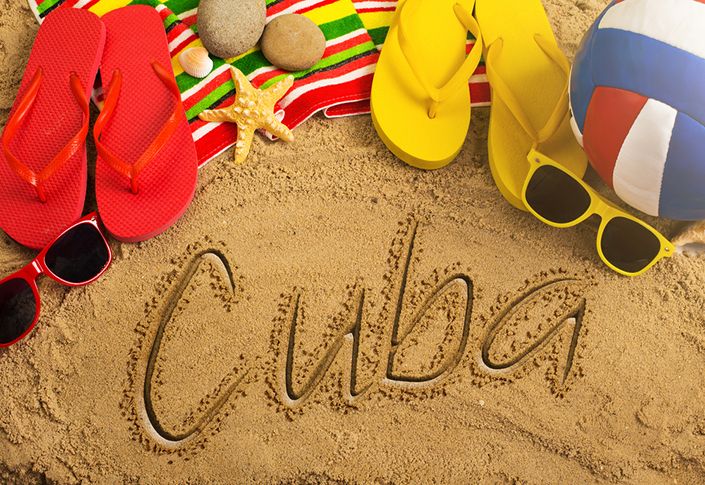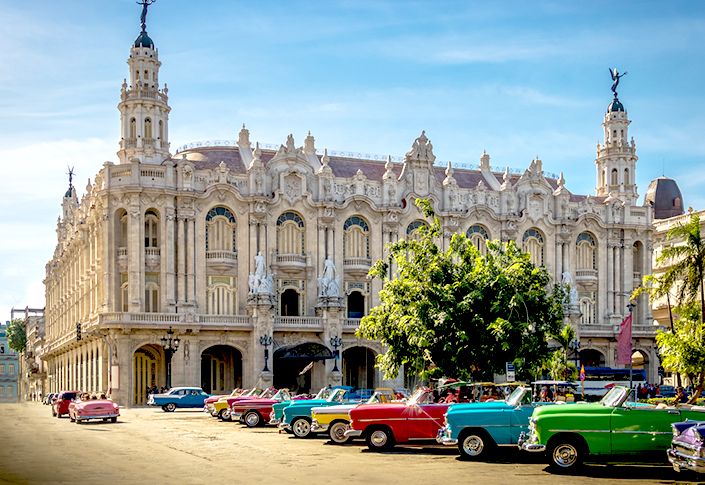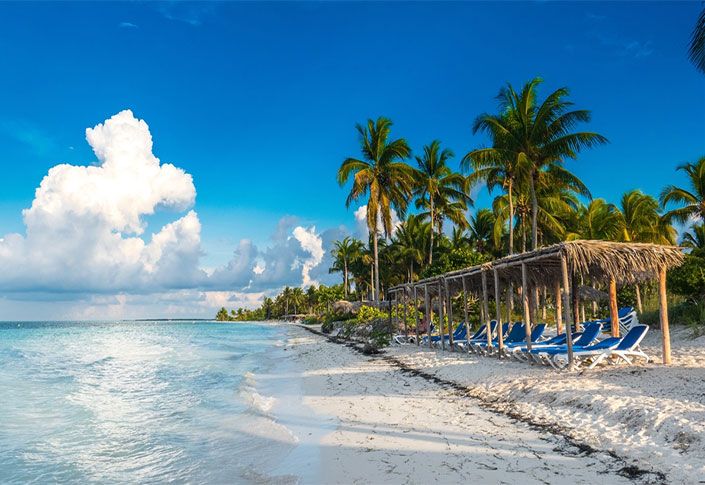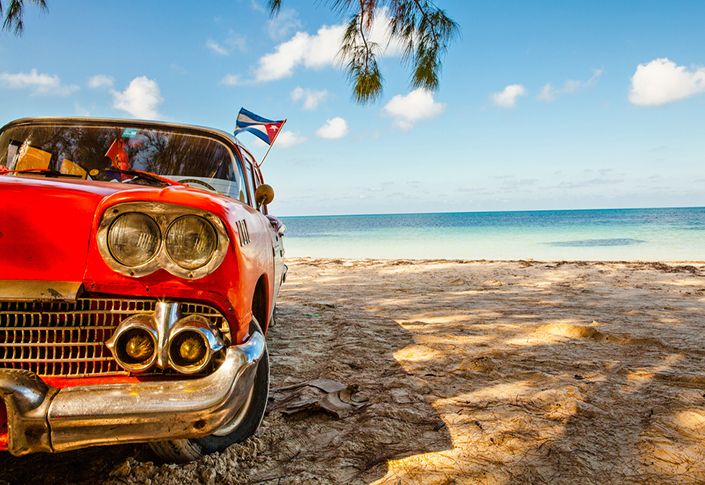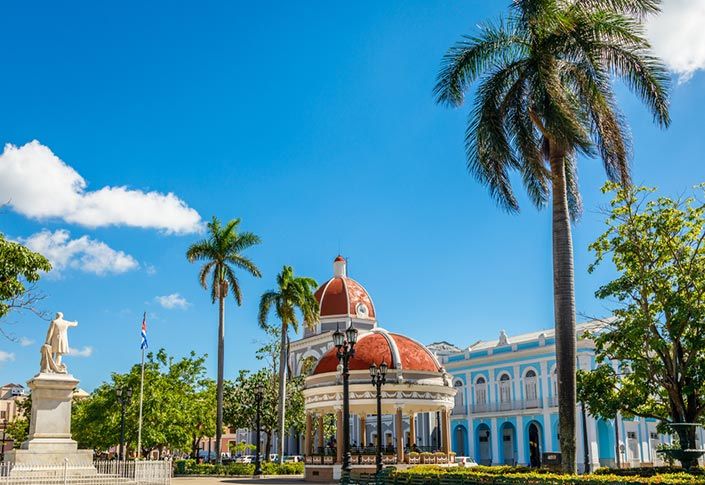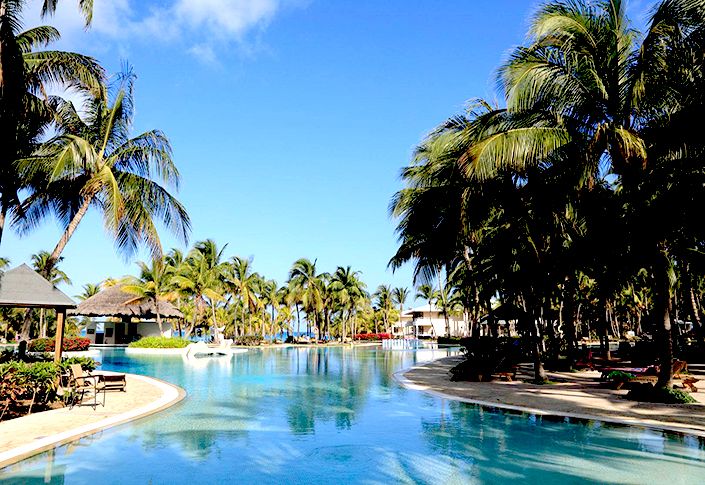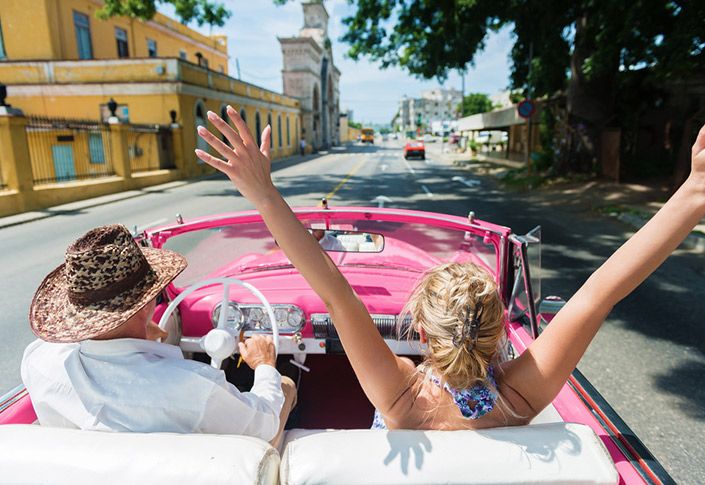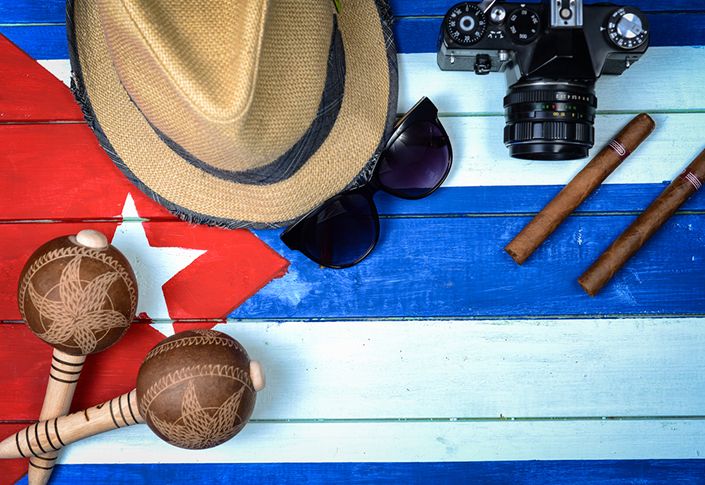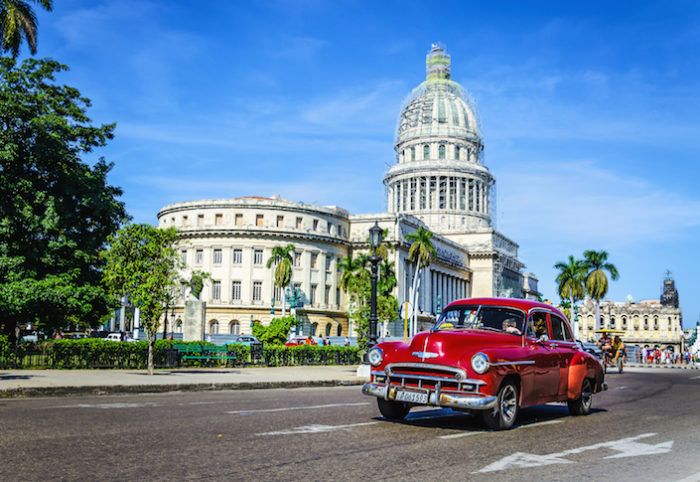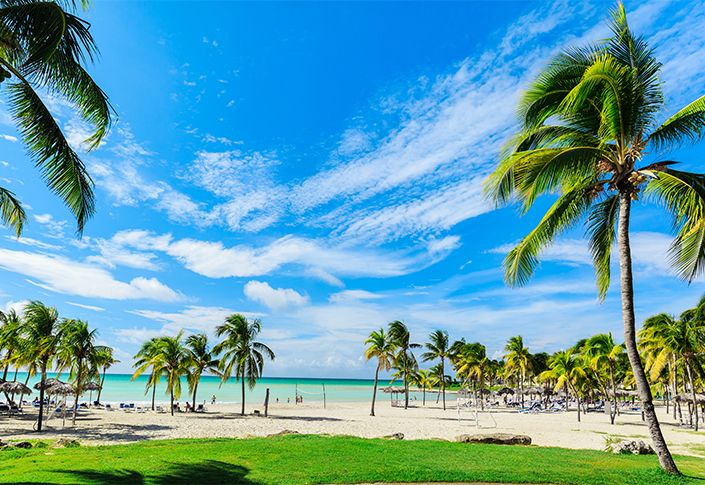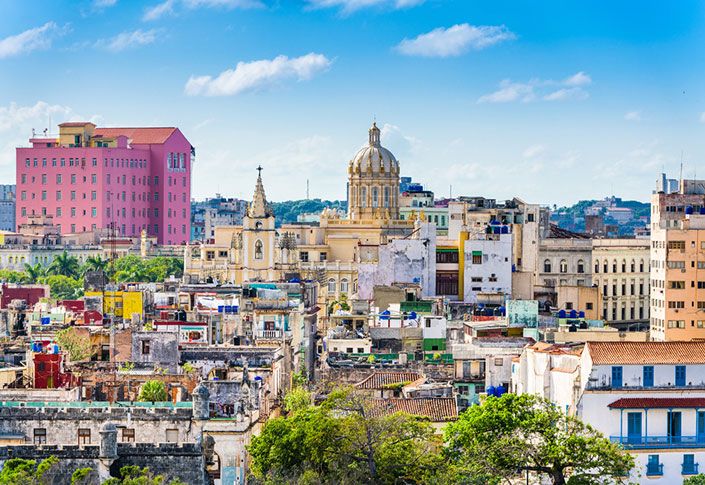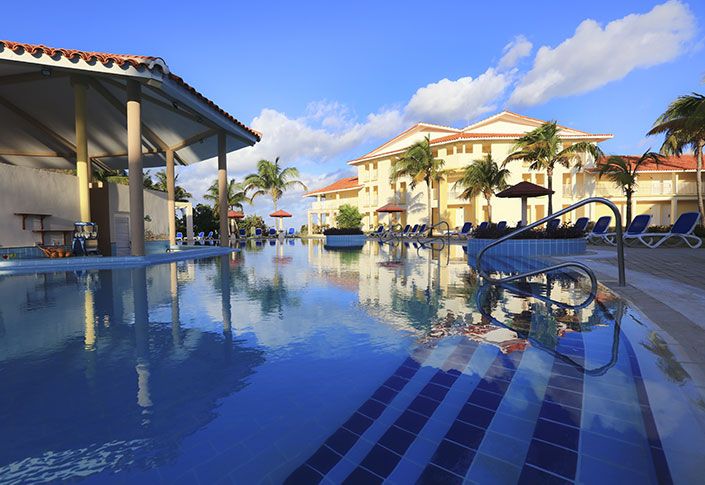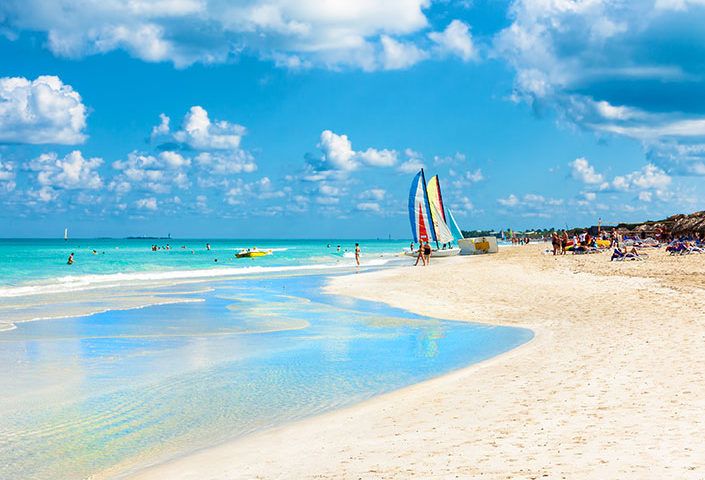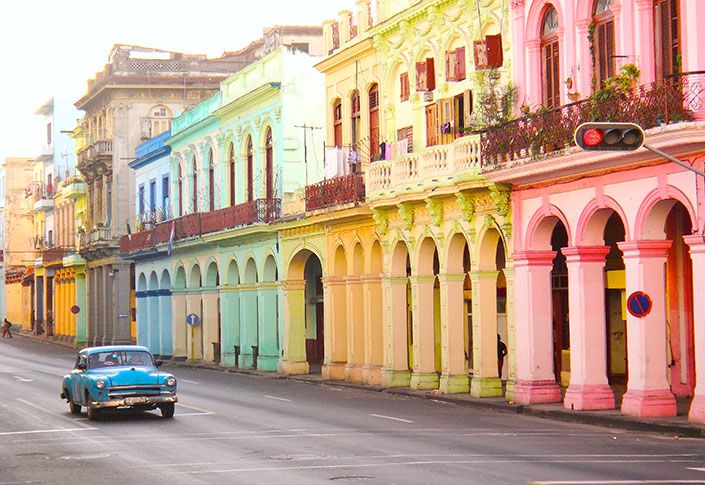Where travel agents earn, learn and save!
Destinations / Cuba
There are so many words to describe Canada’s favourite Caribbean island destination. And so many reasons to keep coming back. From its iconic old towns and cities in Havana, Santiago de Cuba, Trinidad and so many more, to its breathtaking beaches, flora and fauna, pristine reefs and unspoiled national parks; from the vibrant music, cigar and mojito scene to the tranquil cays; and from the ramshackle charm of UNESCO heritage architecture and 1950s cars, to the modern luxury of world class hotels and restaurants now calling Cuba home; this country’s genuine enduring welcome, appeal and warmth keep it perennially at the top of any must-see list.
How to Get to Cuba
There are two ways to get to Cuba: Air and Sea. Cuba has 10 International Airports, 15 National Airports, 4 cruise terminals and 15 international marina.
International Airports in Cuba:
• José martí (Boyeros, La Habana)
• Vitalio Acuña (Cayo largo, Isla de la Juventud)
• Juan Gualberto Gómez (Matanzas, Varadero)
• Ignacio Agramonte (Camagüey)
• Frank País (Holguín)
• Antonio Maceo (Santiago de Cuba)
• Abel Santamaría (Santa Clara, Villa Clara)
• Jaime González (Cienfuegos)
• Jardines del Rey (Cayo Coco, Ciego de Ávila)
• Sierra Maestra (Manzanillo, Granma)
Cruise Terminals:
• La Habana (Avenida del Puerto)
• Cienfuegos (Calle La Mar)
• Isla de la Juventud (Punta Francés)
• Santiago de Cuba (Avenida Jesús Menéndez)
• Plus 15 international marina or strategic points servicing medium and small boats
Tour Operators
Canada has the most direct flights to Cuba of any country. The five major tour operators offering all-inclusive packages, air-only or hotel-only options are:
• Hola Sun - The Cuba Specialist
• Sunwing
• Transat
• Air Canada Vacations
• WestJet Vacations
Clearing Customs
Visitors who are well prepared and adhere to a few simple rules should have smooth trips through customs, both when entering and leaving Cuba.
Key information to remember:
Cuban customs laws prohibit any imports of pornographic material, narcotics drugs, live animals and firearms, although the latter can be authorized by the organization in charge of this tourist modality when these are for the sport of hunting. Any possession, consumption and traffic of narcotic drugs and other substances are penalized, except for those of personal use accompanied by the corresponding doctor prescription letter.
Inbound Travellers
In addition to their personal jewelry, cameras and other valuables, visitors are allowed to bring into Cuba, duty free, two bottles of liquor, one carton of cigarettes and up to 10 kilograms of medicine. Gifts up to a value of $250 US can also be brought in. Of that, $50 is duty-free; the rest is 100 per cent taxable. Narcotics and firearms, except for authorized hunting weapons, are not allowed into the country. No restrictions exist on the amount of money a visitor can bring into the country, but amounts over $5,000 US should be declared.
VCR and DVD players are now allowed into Cuba:
Cuban Customs has lifted the restrictions on the importation of VCR and DVD players into Cuba. Starting May 1, 2007 travellers can bring them into the country regardless the type, brand or model, including the built-in ones in other equipment.
Tourists are allowed to take their personal effects which include the articles (new or used) that they reasonably need for their holidays (according the length and purpose of the trip), plus:
• Sport equipment
• Jewels
• Photographic camera and camcorder
• Cellular phones and blackberries
• Laptops, iPods, MP3 players and video games
• Hair dryers and electric shavers
• Binoculars, one portable radio receiver, tape recorder, one portable music instrument and a sound recording device
It's prohibited to bring into the country:
• Narcotics, explosives and pornography
• Any item (including literature) intended to be used against the national security
• Animals and plants regulated under the Convention on International Trade in Endangered Species of Wild Fauna and Flora
• GPS, cordless phones (for the household) that operate in bands different than 40-49 MHz and 2,4 and 5 GHz
• Household appliances: freezers, air conditioners, electric kitchens and furnaces, electric ovens, electric showers, electric fryers, electric water heaters, irons (travel irons are allowed), toasters and any spare electrical parts for the above
For further information and complete list of the prohibited articles, please visit aduana.gob.cu
Outbound Travellers
Visitors leaving Cuba can take out 50 cigars, and 1.14 litres of liquor (two regular-sized bottles of 750ml). To export other items, such as art and antiques, obtain a permit from the National Registry of Cultural Objects. Most legitimate vendors have such permits, and can officially stamp your receipt. Strict rules apply to taking plants and animals out of Cuba. The Convention on International Trading in Endangered Species (CITES) prohibits taking the following out of the country: indigenous flora and fauna; live or preserved specimens and articles made from parts of endangered species. However, articles made from species approved by the CITES Administrative Authority in Cuba may be taken out.
Entry Requirements
Canadian nationals holding a valid Canadian passport or a Canadian permanent resident card do not need a visa to enter Cuba. They can travel with their valid passports (and PR card) and the tourist card that is included in the holiday package (provided onboard or at the airline counter at airports in Canada at time of check in). It is important for you to know that the Canadian passport should be valid for at least one week after the return date. This also applies for Citizens from other countries holding either of the following categories:
• Valid Work Permit (holding multiple entry visa on passports)
• Valid Student Permit (holding multiple entry visa on passports) If you do not fall in either of the categories mentioned above, please contact the Cuban Consulate – Tourism Section at info@gocuba.ca
If you are sailing to Cuba, be sure to contact port authorities before you reach jurisdictional waters (12 miles from the base line).
Use these communication channels:
• HF (SSB) channel 2760 (national coastal network) and 2790 (tourism network) or
• VHF channel 68 (national coastal network) and 16 (tourism network)
Port authorities will ask you for the following information:
• Name of yacht
• Flag
• Port of registry
• Last port of call
• Port of arrival
• Estimated time of arrival (ETA)
• Type of craft
• Colour of craft
• Number of persons on board You must follow the instructions given by the port authorities and remain on board until all legal formalities are concluded.
If you plan to fly to Cuba on a private plane, you must send an operational request for approval of your flight plan in a telex addressed to the:
Regimen de Vuelos de Aeronautica Civil de Cuba, La Habana Telex: 51727 ACVCU In the request, you must specify:
• Whether the plane is private
• The type of aircraft
• Registration number and class
• Starting point
• Pilot’s name
• Expected date, place and time of arrival
• Objective of the trip For the latest updates, please visit gocuba.ca
How to Get Around Cuba
Cuba has excellent taxi services as well as car and van rentals. Tour buses cover the major sites of interest. For special excursions, contact the tourism desk at your hotel. Economy travel on public buses among major centres around the country is also available through Viazul. For information and schedules, visit viazul.com. The country has ten international airports, and 15 local ones, eight of which offer domestic charters and air taxis. Of Cuba’s extensive, 50,000-kilometre network of highways and roads, 14,000 kilometers are paved.
Important Facts your Should Know
Health Care and Insurance
Canadians travelling to Cuba are under no health restrictions, and require no vaccinations. Tourists need travel insurance in order to visit Cuba. You can use your travel insurance from work or buy it at your travel agency or financial institution. In Cuba, insurance can be obtained at the airport on your arrival from Asistur S.A., the country's official travel insurance company. For more information contact Asistur S.A. directly at asistur.cu
All hotels have doctors on staff or on call who guarantee primary care. Every major resort area also has an international medical clinic that handles more complex medical conditions. These clinics are scattered across the country in:
• Havana
• Pinar del Río
• Varadero
• Cienfuegos
• Cayo Santa Maria
• Cayo Largo
• Trinidad
• Cayo Coco
• Santa Lucia
• Guardalavaca
• Santiago de Cuba
Electrical Equipment
Cuba’s electricity is 110 volts, 60Hz, but most hotels and resorts have 220 volts. Electrical outlets take flat plug prongs (as in North America). If you’re bringing an electrical appliance, check before you leave to see if you need an adaptor or converter.
Time
Cuba is on Eastern Standard Time. From May through October, Cuba moves into daylight savings time (an hour ahead).
Telecommunications
Cuba’s telephone network provides direct communications inside the country and out – with any part of the world. Most hotels and resorts also provide Internet connections and Wi-Fi service. Wi-Fi is available also at the main squares in major cities across the country. Wi-Fi is not free, the local telephone company sells a calling card for 2.00 CUC per hour that can be used anywhere in Cuba.
To dial Cuba directly from Canada:
• Dial the prefix for international calls: 011
• Dial Cuba’s country code: 53
• Dial the code for the area you are calling
• Dial the telephone number of the person you are calling
To dial to a Cell Phone number + 53 (Country code) + Telephone number which most of the time starts with a 5. Direct dialing area codes within Cuba:
• Pinar del Río - 48
• Artemisa - 47
• Mayabeque - 47
• Ciudad de La Habana - 7
• Matanzas - 45
• Villa Clara - 42
• Cienfuegos 43
• Sancti Spiritus 41
• Ciego de Avila 33
• Camaguey 32
• Las Tunas 31
• Holguín 24
• Granma 23
• Santiago de Cuba 22
• Guantánamo 21
• Isla de la Juventud 46
Roaming Service: Fido, TELUS, Bell Mobility, Wind and SASKTEL have bilateral agreement for roaming services in Cuba.
Emergency Contacts
For emergency consular assistance, contact the Embassy of Canada in Cuba, in Havana: travel.gc.ca
Cuban Phrases
Here are some uniquely Cuban phrases you likely didn’t learn at school: ¡Acere, qué bolá! - How’s it going buddy? Chévere – Cool! ¡Chao pescao! - See you later, alligator (actually fish)
With a response of: Y a la vuelta picadillo! - And next time mincemeat! Está volao - that’s amazing En talla - it’s a good fit / makes sense Me piro - I’m going to get going Phrases courtesy of InsightCuba
Western Cuba
Cayo Largo del Sur
On the Caribbean side of Cuba lie two idyllic islands—the Isle of Youth and Cayo Largo de Sur—with sugar-white beaches and unparalleled dive sites. The Isle of Youth is second in size only to the main island. Grapefruit fields, pine trees, parrots and marshes characterize this spot, which also houses schools for young Cuban and foreign students. A few kilometres to the southwest lies Cayo Largo del Sur, an idyllic little key in the heart of the Caribbean.
Peninsula de Zapata
On the south side of the territory, the Great Natural Park of Montemar, located in the Ciénaga de Zapata Reserve of the Biosphere, is particularly attractive for those who prefer to enjoy the multiple specialties of nature tourism. There’s also many places of interest for those who enjoy open sea diving or speleo-diving in sunken caves.
Varadero
Varadero beach—some call it the world’s greatest beach—has long been the pride of Cuba, and a magnet for the rich and famous. Today, a broad range of hotels and resorts on this wide, sandy beach offer affordable vacations to please any pocketbook. Considered by many as the world's most beautiful beach, Varadero is part of a peninsula that stretches far out into the calm waters of the Atlantic. Its 21-kilometre strip of fine white sand is an ideal vacation spot for sun-lovers, water babies and golfers. Its location on a narrow peninsula ensures that it is constantly cooled by tropical breezes. But this white beach set against a backdrop of astonishing turquoise water and azure sky is not the only attraction in Matanzas province. The nearby cities of Cárdenas and Matanzas (the provincial capital) are known for their art, history and culture. Southwest of Varadero, on the province's Caribbean coast, is the Zapata Peninsula, famous for its ecotourism and history.
See more here Download the official Tourist Guide here
Havana
The exotic capital of Cuba and largest city in the Caribbean is a must-see for any visitor. For centuries, it has served as the gateway to the Gulf of Mexico. And in 1982, Old Havana, the city’s historic centre, was declared a UNESCO World Heritage site.
See more here Download the official Tourist Guide here
Pinar del Rio
If you’ve ever wondered where the world’s finest cigars start out, it’s in the lovingly cultivated tobacco plantations of Cuba’s Pinar del Rio province. But those plantations are only part of the area’s magic.
See more here Download the official Tourist Guide here
Central Cuba
Villa Clara
A historical centenarian city, warm beaches, and an endemic flora and fauna are unique attractions that Villa Clara and the three jewels of Las Brujas, Ensenachos and Cayo Santa María right in the centre of the island, offer the visitor, each with an authentic Cuban flavour.
Click here to download the official Tourist Guide
Trinidad
Founded by the Spanish conquerors in 1514, Trinidad is the most serene, gentle and generous coloured picture of the Cuban old days and a worthy Cultural Heritage Site. Such status was also conferred in 1988 by UNESCO to the Valle de Los Ingenios, a great natural and archaeological reserve of the 19th century’s sugar industry, whose production made this city one of the most prosperous in Cuba.
Click here to download the official Tourist Guide
Jardines del Rey
This archipelago, including Cayo Coco and Cayo Guillermo takes up a 495 kilometers long strip toward the central-northern coast of Cuba and it´s the largest among the four archipelagos surrounding the main island. One of its special characteristics is the imposing coral reef that protects it, itself almost 400 kilometers long and regarded among the largest in the world, behind Australia’s Great Coral Reef.
Click here to download the official Tourist Guide
Camaguey
One of the first cities built by the Spaniards in Cuba and Latin America in 1514, it was named Santa María del Puerto del Príncipe which is a reminder of its first settlement. Its current name –Camagüey- is an Indo-Cuban voice that makes reference to the Camagua tree (that grows in the surrounding low areas).
Click here to download the official Tourist Guide
Eastern Cuba
Holguín
Known for its historical heritage, beaches and people. Upon first seeing the area, Christopher Columbus exclaimed in 1492 "This is the most beautiful land human eyes have ever seen."
Click here to download the official Tourist Guide
Granma
Granma, province that covers 8,371.8 square kilometers in the southeastern part of Cuba, is a blend of lush nature, combining sea and mountains and vast historical tradition. Bayamo, its capital, was the second village founded by Spaniards in 1513. It is distinguished by its pleasant tropical climate and its tourist attractions, located mainly along the southern coast and in the mountainous region of the Sierra Maestra, among them Marea del Portillo beach and nearby cays, rivers, waterfalls and caves.
Click here to download official Tourist Guide
Santiago de Cuba
Santiago de Cuba is the second most important city in the country. With its own unique history, rhythm and warmth, it’s Cuba’s most Caribbean city.
Click here to download official Tourist Guide
Guantánamo
The Cuban High East, is a touristic region identified, among other things, by the international song Guantanamera, composed by Cuban Joseíto Fernández.
Click here to download the official Tourist Guide
Exciting things to see and do in Cuba
• Snorkel along the coral reef
• Explore the historical city of Havana
• Swim with friendly dolphins
• Discover the colonial city of Trinidad or Camaguey
• Meet friendly locals and learn about their everyday life
• Relax on the most beautiful pristine beaches in the Caribbean
• Ride a moped through the breathtaking country side
• Smoke the finest of cigars
• Enjoy a round of golf in Varadero
• Dance the night away in Varadero’s club district
• AND MUCH MORE …
Gaviota Travel Mart 2023 Takeaways: Cuba is open and fully operational!
Discover Cuba’s newest destinations with Hola Sun Holidays
FITCuba 2023: With Canadian travellers leading the way, Cuba is ready for another busy year
"Thank you for supporting us": Hola Sun starts winter season with new hotels, new destinations, and more perks for Travel Agents!
Explore Holguin and Santiago de Cuba on Hola Sun mini FAM trip
Clients can truly relax at gorgeous Gran Muthu Almirante Beach Hotel on Cuba’s Playa Guardalavaca
Holguin, the crown jewel of Cuba
Gaviota Travel Mart 2021 - Cayo Santa María: Cuba’s Prime Minister and Tourism Minister provide updates on the Future of Travel



